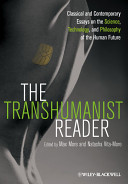Whole Brain Emulation
We consider a strategy of straightforward duplication of the activity, and look at the numbers of some of the components. The human brain has up to one hundred billion (10^11) neurons and between one hundred trillion (10^14) and one quadrillion (10^15) synapses. But we have reached a point where for purposes of data acquisition these objects are now considered fairly large (e.g. 200 nm to 2,000 nm for synaptic spines and 4,000 nm to 100,000 nm for the neural soma), at least by the standards of the current nanotechnology industry (working with precision at 10s to 100s of nanometers). And in terms of their activity those components are mostly quiet.
I coined the term whole brain emulation around February/March of 2000 during a discussion on the old “mind uploading research group” (MURG) mailing list, in an effort to remove confusion stemming from the use of the term “mind uploading”, which better refers to a process of transfer of a mind from a biological brain to another substrate. It has since found a home in mainstream neuroscience, although the less specific term “brain emulation” is also frequently used when a project does not take on the scope of whole brains. The concept of emulation, as opposed to simulation (a term in common use where models in computational neuroscience are involved), refers to the running of an exact copy of the functions of mind on another processing platform. It is intended to be understood as analogous to the process of taking a computer program from one hardware platform (e.g., an Android cell phone) to an emulator of the same processing operations on a different hardware platform (e.g., a Macintosh computer).
Notes:
From Randal A. Koene's "Uploading to Substrate-Independent Minds"
Folksonomies: modeling emulation
Taxonomies:
/health and fitness/disease (0.414678)
/technology and computing/hardware (0.346458)
/technology and computing/hardware/computer (0.156836)
Keywords:
brain emulation (0.922884 (negative:-0.377251)), Randal A. Koene (0.748423 (neutral:0.000000)), current nanotechnology industry (0.673199 (negative:-0.210671)), Android cell phone (0.646652 (neutral:0.000000)), different hardware platform (0.622571 (neutral:0.000000)), synaptic spines (0.503831 (neutral:0.000000)), straightforward duplication (0.502011 (positive:0.378103)), Substrate-Independent Minds (0.492155 (neutral:0.000000)), better refers (0.483162 (neutral:0.000000)), human brain (0.472965 (neutral:0.000000)), neural soma (0.472446 (neutral:0.000000)), data acquisition (0.455748 (neutral:0.000000)), mainstream neuroscience (0.454244 (positive:0.312520)), term whole brain (0.453765 (negative:-0.377251)), biological brain (0.448055 (neutral:0.000000)), research group (0.446371 (neutral:0.000000)), mailing list (0.445846 (neutral:0.000000)), computational neuroscience (0.444635 (neutral:0.000000)), specific term (0.438641 (neutral:0.000000)), exact copy (0.431632 (neutral:0.000000)), processing operations (0.430234 (neutral:0.000000)), nm (0.424464 (neutral:0.000000)), processing platform (0.421727 (neutral:0.000000)), activity (0.290003 (positive:0.446945)), components (0.289797 (positive:0.515788)), nanometers (0.277323 (positive:0.271845)), February/March (0.272171 (negative:-0.377251)), synapses (0.270635 (neutral:0.000000)), 10s (0.268354 (positive:0.271845))
Entities:
Randal A. Koene:Person (0.758585 (neutral:0.000000)), Macintosh computer:FieldTerminology (0.658539 (negative:-0.316319)), Android:OperatingSystem (0.599874 (neutral:0.000000)), MURG:Company (0.558598 (neutral:0.000000)), mailing list:FieldTerminology (0.523618 (neutral:0.000000)), 100,000 nm:Quantity (0.523618 (neutral:0.000000)), 2,000 nm:Quantity (0.523618 (neutral:0.000000)), 4,000 nm:Quantity (0.523618 (neutral:0.000000)), 200 nm:Quantity (0.523618 (neutral:0.000000))
Concepts:
Brain (0.956969): dbpedia | freebase | opencyc
Neuron (0.686469): dbpedia | freebase | opencyc
Nervous system (0.617551): dbpedia | freebase | opencyc
Human brain (0.553672): dbpedia | freebase
Cognitive science (0.452188): dbpedia | freebase | opencyc
Randal A. Koene (0.435426): dbpedia | freebase
Neuroscience (0.416617): dbpedia | freebase
Psychology (0.397390): dbpedia | freebase | opencyc






